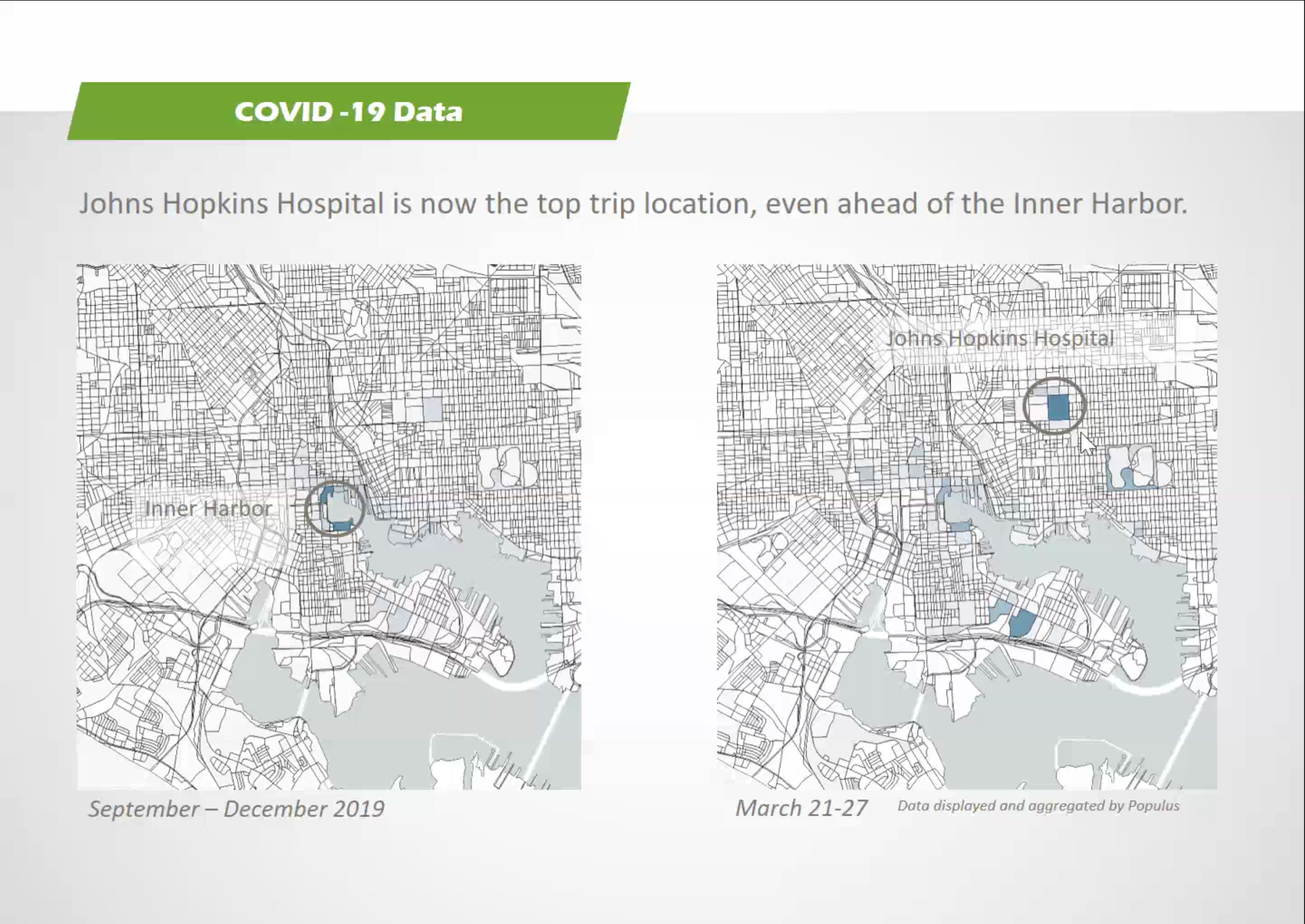Can I still ride my bike?
Yes! While we strongly support the stay-at-home and social distancing guidelines set out by Maryland state leadership and the CDC, riding for commuting or exercise is allowed.
If you are riding your bike:
Follow social distancing by only riding solo or with members of your household
Follow the recommended 6 feet distance, leaving as much space between you and others
Be extra courteous when passing others walking or biking, announcing that you’re passing and leaving as much space as possible
Consider those who are essential workers and need to commute
Ride consciously and carefully, taking care not to take risks that would need medical resources
Please visit the CDC CDC or WHO pages for the most up-to-date recommendations.
Should I wear a mask?
The CDC now recommends that everyone wears a mask when in public. Check out these resources for information about wearing masks while exercising:
Can I drive to a park or trail to ride?
Making as few trips as possible is recommended, but if there is not a safe place for you to ride for exercise within biking distance from your house, you can drive to a park.
Are parks open?
Yes, most parks in Baltimore remain open, but have closed or have restrictions on areas with potential for gathering or spreading disease. Visit Baltimore Rec and Parks for details on city parks, and Maryland Department of Natural Resources for state parks.
Visits to parks should be for exercise, do not congregate.
We recommend visiting quieter and larger parks like Druid Hill, Carroll Park, Gwynns Falls/Leakin Park, Clifton Park, and Herring Run which offer more space to spread out. The Lake Montebello loop is also now closed to cars.
Do I need to do anything specific if I’m bike commuting to an essential job?
While some employers are providing letters to employees, you should not be asked to show proof that you are riding to an essential job. If this happens to you, let us know.
How should I prepare for a ride now?
It’s even more important to be prepared and self-sufficient since many businesses are closed to the public now. It’s harder to stop in somewhere for something you may need.
We recommend you:
Bring a flat kit, tools, water, snacks, and basic first aid kit so you’re able to take care of yourself
Plan your route so you don’t need to stop anywhere
Bring personal hygiene items (hand sanitizer, tissue, wipes, etc) so you can wash your hands before and after you touch anything in public, as you might unexpectedly need to touch or interact with someone to help some else in need
Plan timing for bathroom/water/food needs
Be mindful that paths and trails, although not all, may be highly travelled, making social distancing challenging. If you arrive somewhere and it is crowded, try to be flexible and go somewhere else.
If you’re riding for exercise, look for less traveled and less busy areas.
Any tips for riding to run essential errands by bike?
Be sure to call ahead to see what their process is (e.g. if they’re doing call ahead to order, limiting the number of people inside, have different hours, etc)
Make sure you have everything you need with you
We know it’s harder to make big grocery runs on your bike, so check in with your community/bike-dependent friends to see if you can combine effort. If you’re driving to a store, see if you can buy things for your bike- or transit-dependent neighbors or friends.
How do I get my bike repaired?
According to the Governor's directive, bike shops are deemed essential businesses and are allowed to stay open.
Local bike shops are mostly open with revised hours and processes to keep employees and customers safe. Most shops are offering drop off repair services, and are taking payments over the phone or via another means. Please call ahead to your shop to learn about their process.
If you typically stop at bike shops for air in your tires, shops are likely able to help, but we recommend calling ahead if you’re able to. If you have one, we recommend bringing a pump and flat kit with you on your ride.
How do I purchase a new or used bike?
Most shops are still selling bikes. We recommend calling them for advice and doing research online to help determine what you’re looking for.
How do I stay connected to the biking community?
Caring for your community by staying home and social distancing, checking in on friends, and providing mutual aid if you can are the best ways to care for Baltimore.
Tag #BikemoreSolo in photos of your solo or household rides!
And keep an eye on our social media for additional virtual events and live streams.
Additional Resources
How to Ride Safely Amid Coronavirus Concerns, Bicycling Magazine
Using Trails and Outdoor Spaces Safely in the Wake of COVID-19, Rails-to-Trails
Solidarity Guide to: Cycling Mutual Aid During the Coronavirus Pandemic, Cyclista Zine







